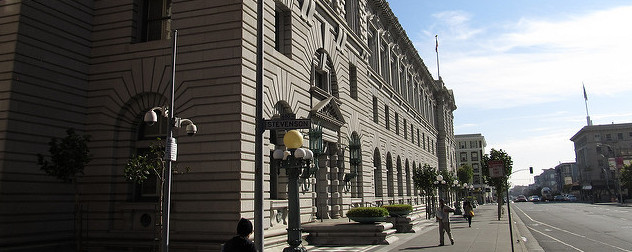The 1990s had the Million Man March. The 2010s may be the decade of the Million Woman Lawsuit.
In the largest-ever U.S. employment class action, as many as 1 million women who have worked at Wal-Mart and Sam’s Club stores since 2001 are suing Wal-Mart Stores Inc. for alleged sexual discrimination.
A decision by the 9th U.S. Circuit Court of Appeals allowed the lawsuit to continue despite questions as to whether so many diverse individuals’ claims could really be consolidated into a single case. The women carried 170 different job classifications and worked in 4,400 different stores. Additionally, plaintiffs did not have the opportunity to opt out of the suit, meaning many may not even believe they were discriminated against.
The Supreme Court will review the case this year. The high court seems likely to use the Wal-Mart litigation to take a long-overdue look at what constitutes a legitimate “class.”
The federal trial judge presiding over the Wal-Mart suit justified his decision to allow the gargantuan class with a succinct summary of the theory behind class action suits: “Rough justice is better than the alternative of having no remedy at all for any class member.”
Class action lawsuits make it possible for individuals to seek damages as a group in situations where the damages are so small or so hard to prove in individual cases that it would be impossible for each injured party to sue separately. The plaintiffs receive a shot at compensation and the defendants can be held accountable for their actions. Some class members may get less than they deserve and some may get more, but there is, at least, rough justice. That’s the theory, in any case.
But that theory leaves out the biggest players of all: the lawyers who represent those supposedly wronged individuals. Each plaintiff’s claim is generally very small, which is why they don’t bother to sue on their own. But if the law firm that can gather enough of these small claims, it has a chance at a big payday. Plaintiffs in class action suits almost never seek out lawyers; it is the lawyers who search for plaintiffs.
Few class action cases end up being decided by a judge or a jury. Class action lawyers usually are looking for a settlement, with its guaranteed payday, rather than a trial that could be decided for or against them. The chances of extracting a lucrative settlement (for the lawyers) improve if the defendant has more at risk. So plaintiffs’ lawyers try to allege astronomical damages. One way to do that is to make the class of plaintiffs as large as possible.
The result is a far cry from anything I’d be inclined to call justice, even rough justice. Companies, afraid of losing in court, pay up whether they have done anything wrong or not. And, depending on the case, plaintiffs might end up with, say, a coupon for a free movie rental or a pair of headphones — an undeserved free gift for those who were not really injured, and lousy compensation for those who were.
Proponents of the status quo argue that, even when class action suits aren’t of much service to the plaintiffs, they at least benefit the courts by preventing the system from getting bogged down with small cases. That would be true if it were reasonable to assume that the members of classes would otherwise sue separately; but, in reality, most would probably choose not to sue at all, since class members generally have relatively little at stake.
The existence of class action lawsuits may, in fact, make more work for the courts by giving attorneys an incentive to seek out as cases and as many “victims” as possible. While working as a journalist covering federal courts in the 1980s, I witnessed first-hand the eagerness with which lawyers raced to the courthouse to file suits on behalf of large, often poorly defined, classes. In one egregious case in the mid 2000s, a law firm actually paid plaintiffs to lodge suits. With the help of its kickback system, the law firm, Milberg Weiss, was able to average one new case a week in 2005.
So what of the argument, posed by the lower-court judge in the Wal-Mart case that, without class action suits, there would be “no remedy at all for any class member?” Of course, individuals could still sue on their own if their cases were large enough. And our society is well-equipped with federal regulators, state attorneys general and advocacy groups that can muster the resources to mount a fair fight against deep-pocketed defendants who really do wrong.
It is also possible that, with class action suits gone, we might just realize that not every injury requires an equal and opposite legal reaction. Witness the government-run compensation schemes that were set up to compensate 9/11 victims and parties who were injured by the Gulf of Mexico oil spill. While far from perfect, these out-of-court mechanisms avoided the diversion of huge amounts of money from victims to lawyers.
Eliminating class actions probably isn’t in the cards. There certainly are some situations where multiple meritorious cases depend upon the same facts and issues; it makes eminent sense, for reasons of economic and judicial economy, to try such cases together.
But the existing class action system has been hijacked by attorneys who make a living — an excellent living, paid for by the rest of society — trolling for junk cases to take to the bank. The Wal-Mart class action gives the Supreme Court a chance to start smoothing out some of that rough justice.













January 26, 2011 - 11:17 am
Shakespeare was right…